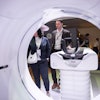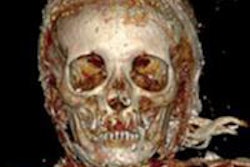Dear AuntMinnieEurope Member,
If you feel confused about the current status of gadolinium-based contrast agents for MRI, then you're not alone. Since the first case of nephrogenic systemic fibrosis was recorded in Austria in 2006, clarity and objectivity haven't always prevailed during the many discussions about the safety of these agents.
To shed light on the controversy, who better to turn to than the Maverinck? He's been involved in MRI since the early days and has followed events and the literature closely for more than 30 years. For his analysis, go to our MRI Community, or click here.
The U.K. Royal College of Radiologists recently published a document about the need to make better use of retired radiologists. Dr. Richard Harries is a fine example of someone who's keeping incredibly active in his retirement. To read our interview about how he works, click here.
Radiologists must come out of their bunkers, and every patient who undergoes an examination should get to meet an imaging specialist. That's the view of Dr. Jan Bosmans, PhD, from Ghent University Hospital, who's just conducted a comprehensive survey about communicating with patients. Get the details here.
Digital tomosynthesis is showing great promise in cancer patients with suspected pulmonary lesions on chest radiography. Italian radiologists found the technique can boost diagnostic accuracy and confidence, leading to only a slight, though significant, increase in radiation dose. They published their findings last week online in European Radiology. Visit our Digital X-Ray Community, or click here.
High density of breast tissue alone is not a strong independent risk factor for cancer, according to a Croatian study presented at last week's RSNA 2015 meeting in Chicago. Click here to learn more.
For in-depth coverage of the congress and industry news, make sure you visit the dedicated RSNA 2015 section of our sister site, AuntMinnie.com.




















